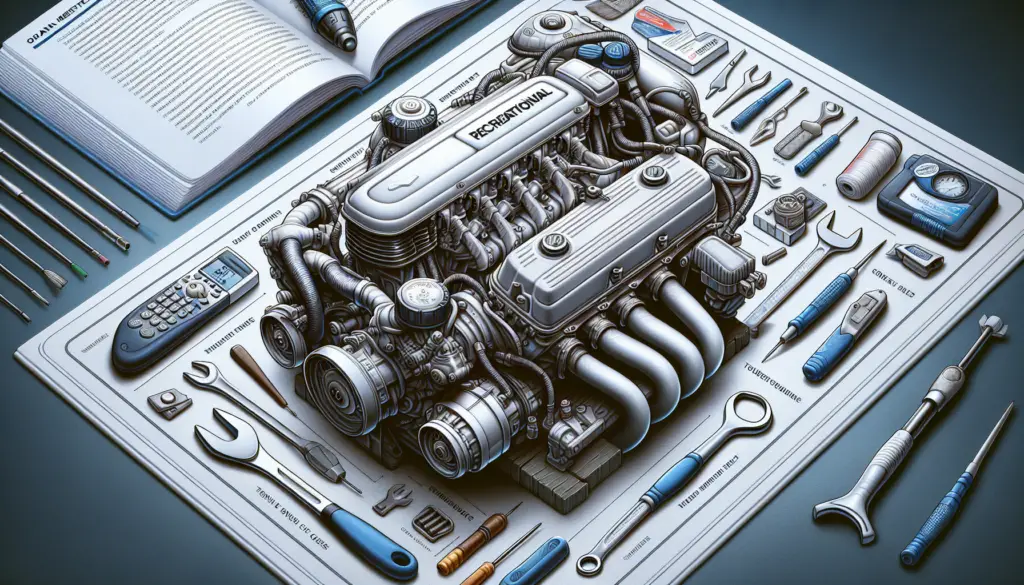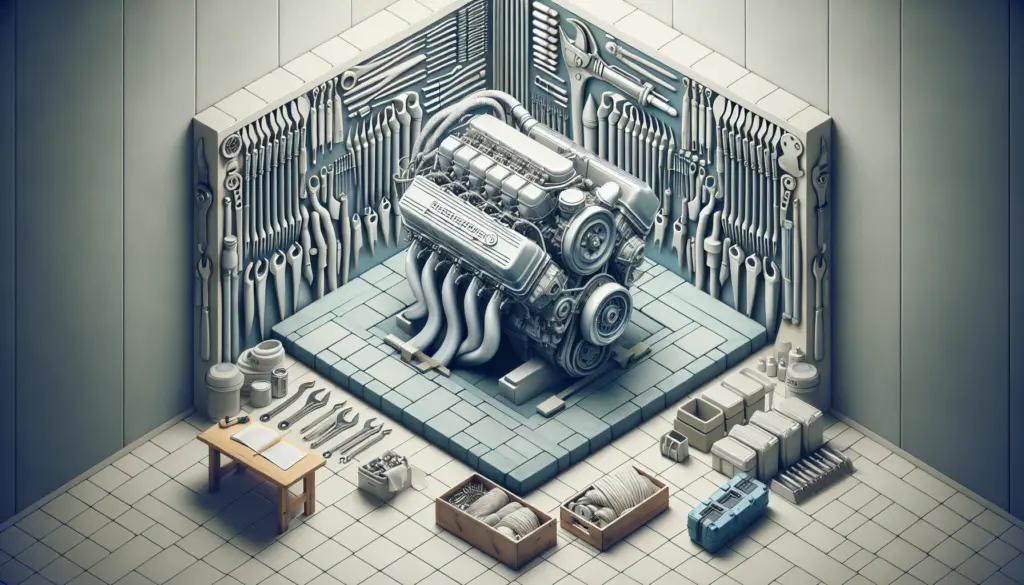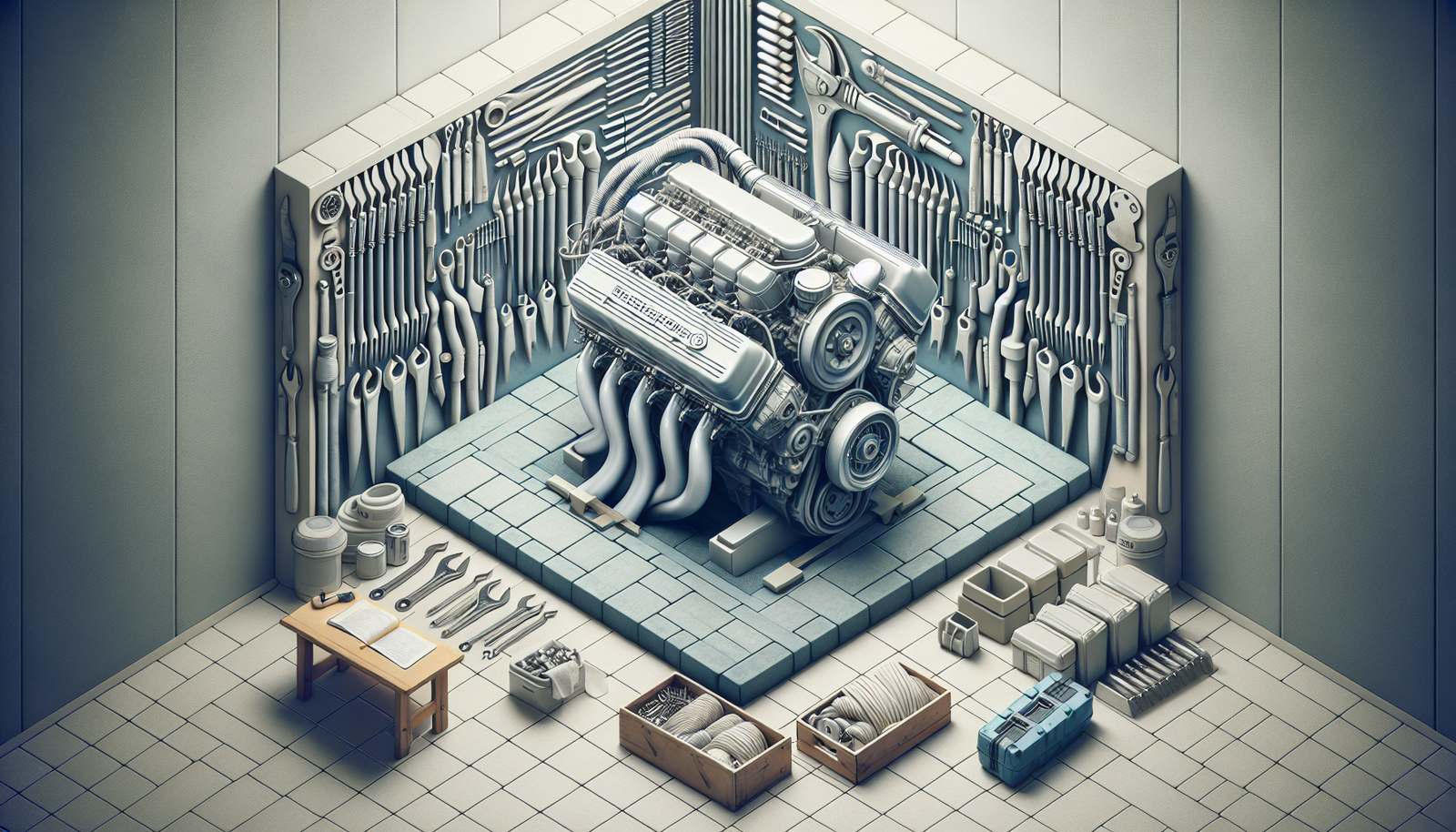Imagine the sun reflecting off the water as you cruise in your recreational boat, savoring the serenity only a day at sea can afford. Suddenly your boat’s engine splutters and dies, casting an unfortunate spell on your day. In the vast sea of boat ownership, engine maintenance is paramount. “The Ultimate Guide to Maintaining Your Recreational Boat Engine” ensures that you’re armed with the essential knowledge to keep your vessel’s heart beating stronger and longer. This comprehensive guide empowers you with practical, easy-to-follow steps for regular engine check-ups, troubleshooting common issues, and prolonging the lifespan of your engine. So, keep reading and take control of your boating experience.
Understanding Your Boat Engine
In order to properly maintain your boat engine, it’s first necessary to understand the basics of its design and operation. After all, you wouldn’t dare to attempt fixing a car without the faintest idea of what the clutch does, right? So why not approach your boat engine with the same kind of respect and curiosity.
Types of Boat Engines
Your boat engine could be one of various types, each with its own unique mechanisms and maintenance needs. The main types include outboard, inboard, stern drive, and jet propulsion. Outboard engines are the most common, especially for smaller boats, and they’re mounted on the outside of the boat. Inboard engines, on the other hand, are located inside the boat’s hull and are more common in larger boats. Stern drives, sometimes called inboard/outboards, blend features from both types. Jet propulsion engines, meanwhile, force water in, then shoot it out at high pressure, effectively propelling the boat forward.
Basic Parts of a Boat Engine
Whichever type you have, all boat engines contain a few common parts. These include the engine block, which is essentially the heart of the engine; a boat motor; a propeller; a gearbox; an exhaust system; and a cooling system. Familiarize yourself with these parts, what they look like, and where they’re located on your engine. This will make future maintenance tasks much easier.
How a Boat Engine Works
Understanding how a boat engine works can also simplify maintenance and troubleshooting processes. In general, an engine works by burning fuel in a closed cylinder. This combustion process produces hot gases that push a piston, providing the power needed to turn the propeller and move the boat.
Initial Boat Engine Inspection
An initial boat engine inspection can identify problems that might require attention. This inspection should cover several key areas.
Engine Oil Check
Just like in a car, the engine oil in your boat needs regular changing to ensure smooth operation. Checking the engine oil isn’t just about looking at the level on the dipstick, but also the color and consistency. The oil shouldn’t have a milky appearance, which could signify water contamination.
Coolant Level
The cooling system of your boat helps prevent overheating and needs to have adequate coolant levels. If the coolant level is low, it could indicate a leak somewhere in the system.
Inspecting Belts and Hoses
Check all of the engine’s belts and hoses for damage or signs of excessive wear, such as cracks or blisters. Replace any that seem questionable.
Spark Plug Inspection
Check your spark plugs for any signs of damage or fouling, which can affect engine performance. In most cases, they simply need cleaning, but sometimes a replacement might be required.
Battery and Electrical Systems
Inspect the battery to ensure that it’s holding a charge properly, and examine all electrical connections for signs of corrosion or potential shorts.

Routine Engine Maintenance
Nothing will extend the life of your boat engine more than regular maintenance.
Changing Engine Oil
Change the engine oil at least once a year or according to the manufacturer’s recommendations. It’s fairly simple; just make sure to properly recycle the used oil.
Replacing Spark Plugs
Spark plugs should be replaced every couple of years, or more often if they’re frequently fouled.
Checking Engine Alignments
This involves making sure the engine shaft is aligned correctly with the propeller shaft, which helps reduce vibration and wear.
Maintaining Cooling System
To maintain engine temperatures within acceptable levels, keep the cooling system in good condition. This means checking coolant levels at regular intervals, watching for leaks, and using appropriate antifreeze when necessary.
Maintaining Fuel System
The fuel system should also be kept in good repair to ensure proper boat operation.
Understanding the Importance of Clean Fuel
Dirty or contaminated fuel can cause a lot of damage to your boat’s engine. It’s important to only buy fuel from reliable sources and consider using a fuel stabilizer to help prevent fuel degradation.
Regular Fuel Filter Change
Like engine oil, the fuel filter should be changed regularly. This helps prevent impurities in the fuel from damaging your engine.
Checking for Fuel Leaks
It’s not just about efficiency – a leaking fuel line or tank can also pose a major safety risk. Regularly check for any signs of leakage.
Using Fuel Stabilizers
In situations where your boat isn’t used for extended periods, using a fuel stabilizer can prevent degradation and keep the fuel ready for your next outing.

Proper Engine Storage Phases
When you’re done using your boat for the season, proper storage techniques will help keep the engine in good shape for next year.
Engine Flushing Method
This involves running water through the engine to remove salt, dirt, and other contaminants collected from the water.
Application of Antifreeze
Using antifreeze in the cooling system will help protect it from freezing in lower temperatures.
Application of Fogging Oil
Spraying this special oil in the air intakes while the engine is running coats interior surfaces, helping to prevent rust and corrosion during storage.
Battery Storage Maintenance
Disconnect the battery and store it in a cool dry place. Regularly check the charge and recharge as necessary.
Dealing with Common Engine Problems
No matter how diligent you are with maintenance, sometimes things just go wrong.
Dealing with Overheating
If your engine is running hot, check the coolant level, the water pump, and the thermostat. Clear blocked cooling passages and replace any damaged parts.
Addressing Loss of Power
Loss of power could be many things, from fouled spark plugs to damaged propellers. Make sure air and fuel delivery are adequate and that all moving parts are in good shape.
Fixing Engine Misfire
Engine misfire is usually due to problems with the spark plugs or fuel system. Troubleshoot these areas first.
Rough Idle Simple Fixes
Slow idle? Check air and fuel delivery, and look at spark plugs and ignition timing. Adjusting the idle speed may also help.
Safety Measures during Maintenance
Working on a boat engine presents some risks, so always make sure to follow appropriate safety procedures.
Proper Protective Equipment
Always wear safety glasses, gloves, and protective clothing when working on your boat’s engine.
Safely Lifting and Supporting Your Boat
If you have to lift your boat, make sure that it is securely supported to avoid injury.
Avoiding Fire Hazards
Remember, you’re working with flammable substances like fuel and oils. Keep a good fire extinguisher close by and avoid creating sparks or excessive heat.
Proper Disposal of Used Oils and Coolants
Always recycle used oils and coolants appropriately in accordance with local regulations.
Maintaining Your Boat’s Exterior and Hull
Aside from the engine, the exterior and hull of your boat need regular care to stay in good shape.
Regular Cleaning
Routine cleaning can help prevent algae growth and other issues that could affect your boat’s performance.
Checking for Damage or Cracks
Regularly inspect the hull for any form of damage – little bumps and scratches can lead to more serious issues if not addressed promptly.
Applying Antifouling Paint
A fresh coat of antifouling paint can help prevent algae and mollusks from attaching to your boat’s bottom.
Inspections for External Hardware
The hardware on your boat, like cleats and windlasses, need periodic inspections and maintenance to ensure they operate correctly.
Maintaining Your Boat’s Interior
Your boat’s interior is just as important as its exterior and engine.
Cleaning Interior Regularly
Just like your home, regularly clear out clutter and dust to keep your boat looking its best and functioning properly.
Checking and Fixing Leaks
Leaks inside the boat can lead to mold, mildew, and other problems. Keep a lookout for signs of leakage and address them immediately.
Ventilation System Check
A proper ventilation system is crucial for any boat, as it controls humidity and prevents the buildup of any harmful gases.
Maintaining Electrical Systems
From interior lights to navigation systems, your boat’s electrical systems play a crucial role in comfort and safety. Maintain them just like you do for your boat’s engine.
Importance and Regularity of Boat Engine Maintenance
Long-Lasting Life of Your Engine
Regular maintenance can spell the difference between a long-lived engine and a short, troublesome one. Oil changes, coolant flushes, new spark plugs – the list goes on, but every bit goes toward prolonging your engine’s life.
Smooth Sailing
It’s hard to enjoy a day on the water when your boat isn’t running at its best. Regular maintenance ensures smooth, reliable operation that will let you focus on the waves ahead, not what’s happening in the engine room.
Reduced Costs in the Long Run
While regular maintenance involves some upfront costs, it’s far cheaper than dealing with a major engine problem down the road. Savvy boat owners know that a bit of prevention is worth a lot of cure.
Enhancement of Overall Boat Value
Nobody wants a shabby-looking, poorly maintained boat. Keeping yours in shining, shipshape condition will enhance its value, whether for your enjoyment, for resale, or both.
At the end of the day, regular maintenance is the key to earning the most enjoyment from your boat. Keep these tips handy and you’ll have a dependable partner for your next adventure at sea.

